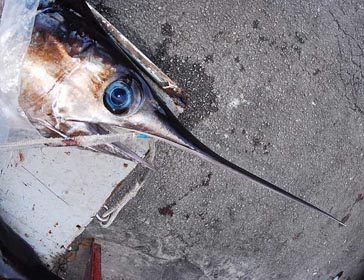Stopping Pollution: Mercury
Mercury is a dangerous chemical, finding its way into the oceans and the seafood we eat. Mercury released to the environment from industrial sources ends up in our oceans, contaminating seafood.
Share
Overview
 People exposed to high levels of mercury in fish can experience health effects such as delayed neurological development in children. Both the Food and Drug Administration and the Environmental Protection Agency have advised women of childbearing age and children not to eat certain types of fish due to high levels of mercury.
People exposed to high levels of mercury in fish can experience health effects such as delayed neurological development in children. Both the Food and Drug Administration and the Environmental Protection Agency have advised women of childbearing age and children not to eat certain types of fish due to high levels of mercury.
Elevated mercury levels are also being found in wildlife, like polar bears, whales and sharks.
Most people remain unaware that a small subset of the chlorine industry makes a major – and completely preventable – contribution to the global mercury crisis.
A handful of chlorine plants still use mercury in the chlorine manufacturing process. Newer, mercury-free technology been around for decades and over one hundred factories globally have switched to the modern technology because of environmental reasons as well as increased energy savings.
Oceana’s campaign to stop seafood contamination is working to convince grocery stores to post the FDA’s mercury advice and to convince the remaining chlorine plants who use mercury to convert to mercury-free technology. Since the campaign began, hundreds of grocery stores have started posting the advice and several chlorine factories have closed or converted.

